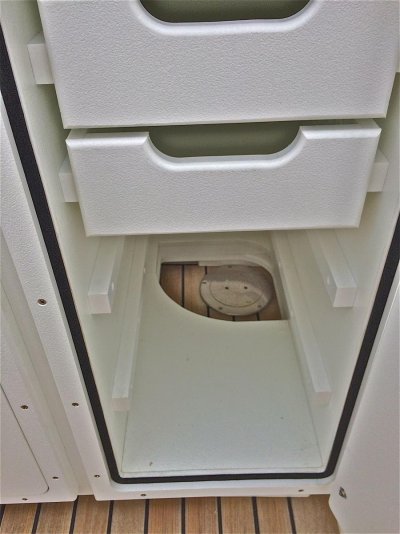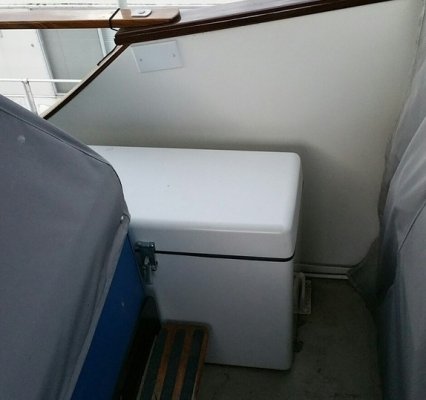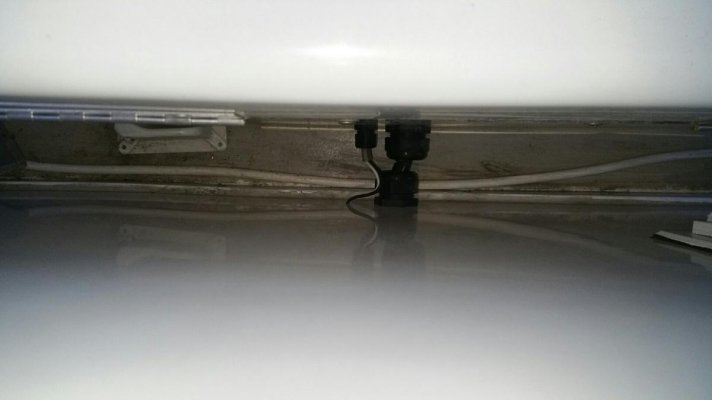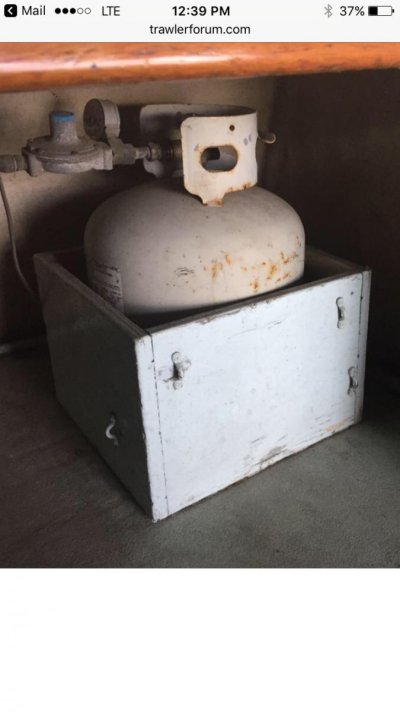Here is a copy of the the ABYC A-1 standard requirements for propane lockers. I am a member of ABYC and I keep a copy of the standards on my computer. I also was the Technical VP of ABYC so am glad to help anyone here with any ABYC related questions.
1.8 LPG LOCKERS
1.8.1
Lockers used to contain LPG cylinders, cylinder valves, regulating equipment and safety devices shall be designed to minimize the likelihood of use as a gear storage locker and shall be
1.8.1.1 vapor tight to the hull interior, and
1.8.1.2 located above the waterline, and
1.8.1.3 constructed of, or lined with, corrosion resistant materials, and
1.8.1.4 shall open only from the top with a gasketed cover that shall latch tightly, and
1.8.1.5 shall be capable of being quickly and conveniently opened without tools.
1.8.2 Installation
1.8.2.1 LPG lockers shall be installed so that the locker opens only directly to the outside atmosphere, and
1.8.2.2 if a LPG locker is installed inside a boat locker, the LPG locker shall be located as high and as close to the boat locker’s opening as possible in order to comply with A-1.8.2.1.
1.8.3
When means of access to the LPG equipment locker or housing is open, the cylinder valves shall be capable of being conveniently and quickly operated, and the system pressure gauge dials shall be fully visible.
1.8.4
Lockers shall be vented at the bottom by a dedicated vent, with a minimum diameter of any component in the vent system that shall be not less than 1/2 inch (12.7mm) inside diameter.
1.8.5
Locker vents shall be led outboard, without pockets, through the hull to a point lower than the locker bottom and above the waterline with the boat in the static floating position.
NOTE: See ABYC H-27 Seacocks, Thru-Hull Connections and Drain Plugs for requirements for seacocks.
1.8.6
Locker vent openings shall be located at least 20 inches (508 mm) from any hull opening to the boat interior.
1.8.7
LPG lockers shall not be used for storage of any equipment other than LPG cylinders, cylinder valves, regulating equipment, and LPG safety devices. See A-1.8.1.
1.8.8
Storage provisions for unconnected reserve cylinders, filled or empty, shall be the same as for the cylinder









